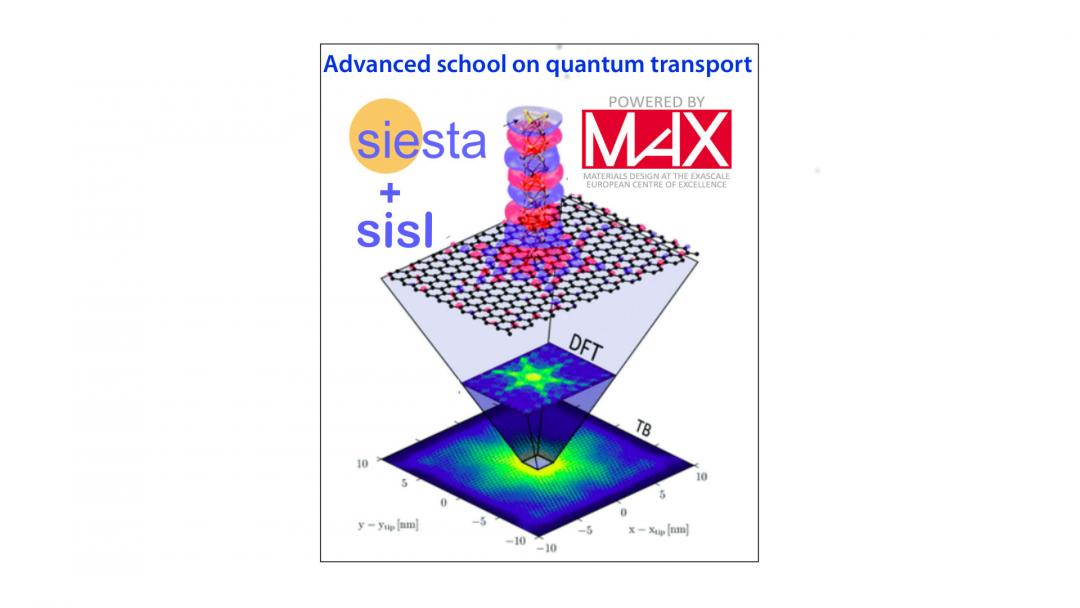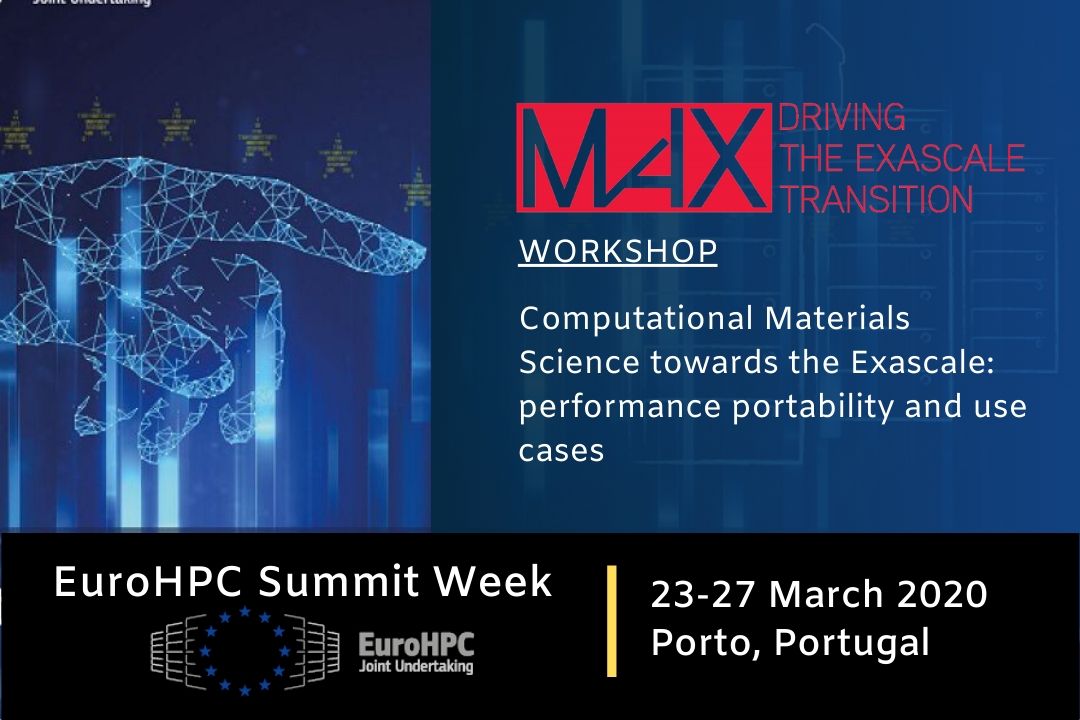
NEWS: The Advanced school on Quantum Transport using SIESTA code, initially scheduled in San Sebastian 23rd/27th March, has been postponed to a later date. We will keep you abreast once the new date will be confirmed.
------------------------------------------------------------------------------------------------------------------------------------------------------------------------------------------------------
Programme
Day 1
Introductory lectures on TranSIESTA/TBtrans/sisl (Nick Papior)
Hands-on: we cover the tools used in one day while expecting participants to have some prior knowledge to the tools. Using sisl for pre- and post-process SIESTA input/output
Poster session
Day 2
Case studies
-
DFT to Tight-Binding (Gaetano Calogero)
-
Hands-on: sisl will be used to reduce a DFT Hamiltonian and participants will be shown how to re-create a selected range of bands in the band-structure diagram.
-
Real space self-energies and calculation of truly single contacts (Nick Papior)
-
Hands-on: TranSIESTA calculations will be performed using real space self-energies removing all periodic images
-
Electrochemistry (Pablo Ordejón)
Hands-on: Changes in the configuration of the adsorption of a water molecule on a gold surface due to the application of an external bias potential
Day 3
Case studies
-
Topological insulators (Zeila Zanolli)
-
Hands-on: Quantum transport calculations for non-collinear spins and Spin Orbit Coupling, including the computation of quantum conductance, electron currents, projected density of states (PDOS) of surface and interface state in topological materials
-
Use of computational tools for transport calculations in industry (Kurt Stokbro)
-
Inelastic effects in I-V characteristics (Thomas Fredericksen)
Hands-on with Inelastica : We show how to calculate vibrational modes, frequencies, and electron-phonon couplings from TranSIESTA for a molecular junction, and how vibrational scattering modifies the transport characteristics.
Social dinner
Day 4
Case studies
-
4-terminal two-STM probe (Thomas Frederiksen)
-
Force analysis and MD simulations under non-equilibrium (Susanne Leitherer)
Hands-on: Understanding how current influences atomic structures is the basis of this tutorial where a link between force and population characteristics will be introduced and examined by participants. Forces under non-equilibrium is particularly important when performing MD simulations, as will be demonstrated.
-
Spin states in graphene nanostructures using electron correlations (Sofia Sanz)
Hands-on: Magnetism can emerge in graphene nanostructures when the Coulomb repulsion between valence electrons forces the electronic system to reorganize into open-shell configurations with unpaired electrons (radicals) located at specific atomic sites. This effect is well captured by the mean-field Hubbard model, in which a local (on-site) Coulomb penalty for double-occupancy of a carbon pz orbital is added to the usual single-particle tight-binding Hamiltonian. We show how to use sisl to obtain a self-consistent solution of the spin-polarized states. -
Day 5
Case studies suggested from participants
-
Suggestions/Open questions from participants
Hands-on: Participants are asked to submit a proposal for an hands-on tutorial. In this session we will cover a selected number of proposal
Topics
-
Advanced usage of SIESTA, TranSIESTA/TBtrans and sisl
Participants will learn how to use the advanced features implemented in the aforementioned code and python framework. In particular students will be taught how to perform efficient DFT+NEGF calculations, pre-processing, post-processing analysis and data visualization.
-
Electrochemistry
First principles simulations are now crucial in many areas of materials science. However, this has not yet reached the field of electrochemistry, where the complexity of the electrochemical environment and the presence of the external electrode potential are difficulties that have precluded direct application of the usual first-principles methods like DFT. We will explain how some of these problems, like the presence of the electrostatic potential, can be tackled using TranSIESTA.
-
Topological Insulators
Topological insulators (TI) are a phase of matter characterized by a bulk energy gap and conducting surface (or edge) states symmetry-protected against small perturbations. Quantum transport simulations are crucial to compute and validate the topological properties of materials. We will show how TranSIESTA can be used to compute the quantum conductance of topological materials (including Spin-Orbit Coupling) with and without defects, visualize the electron currents, compute the projected density of states (PDOS) of the surface and interface states.
-
Inelastic transport
The modelling of inelastic effects due to the electron-phonon coupling in nano-scale devices is of great technological importance as it impacts both the transport properties and Joule heating. It is especially challenging to include the effects in large-scale atomistic first principles device simulations. We will discuss how this can be addressed using various approximations.
-
Correlated systems
Electron correlations in magnetic systems are necessary to understand e.g. the Kondo effect in nanostructures. It is of vital importance for predicting spin structures and for future spintronics. System simulations with the Hubbard-U model provides a simple and, yet, often sufficient method in understanding how electron correlations affect magnetism in nanostructures.
-
Single contacts by removal of periodic images
Understanding transport properties under non-equilibrium is of vital importance to the development of next-generation electronics. A basic principle of conducting such simulations is by using Bloch’s theorem which has the disadvantage of adding a periodic image of the junction. We will present how users can overcome this limitation and simulate truly single junctions.
-
Modelling of extremely large scale systems with DFT precision
Recent increase in compute power is rapidly decreasing the gap between experimental and theoretical works. This allows theoreticians to study one-to-one samples matching an exact experiment. However, there is still some way to go in terms of scalability and precision. Here we present a method to extract the important part of a Hamiltonian in an energy window allowing simulations of transport properties of even larger systems by retaining the band-structure without using any wannierization techniques.



